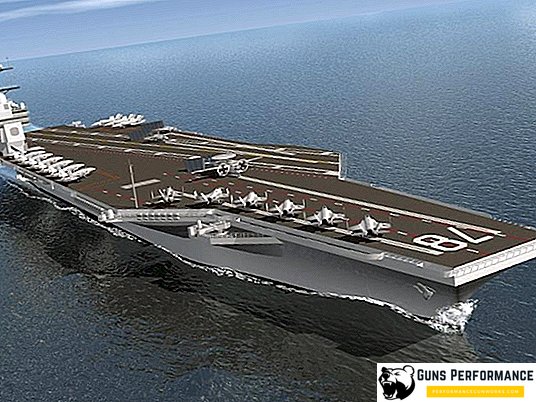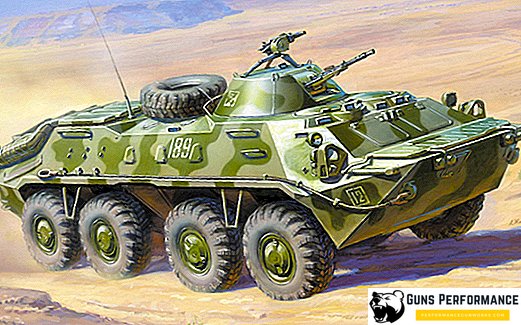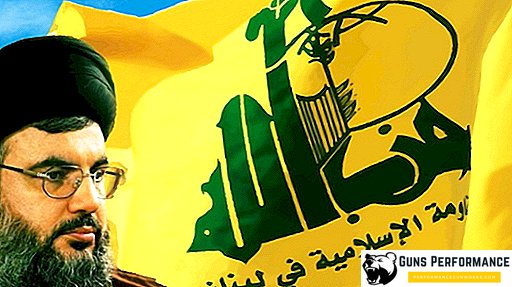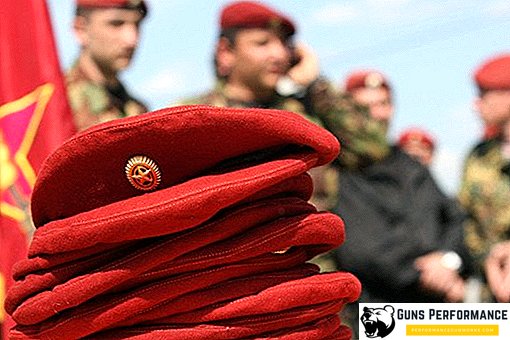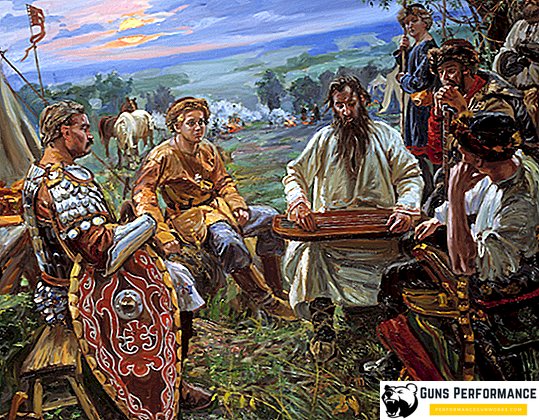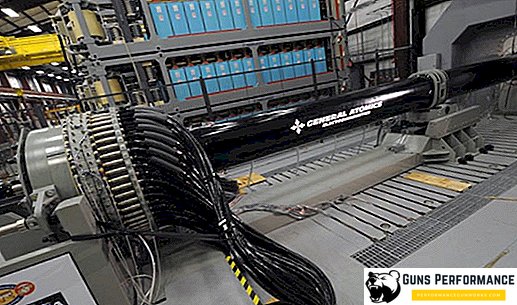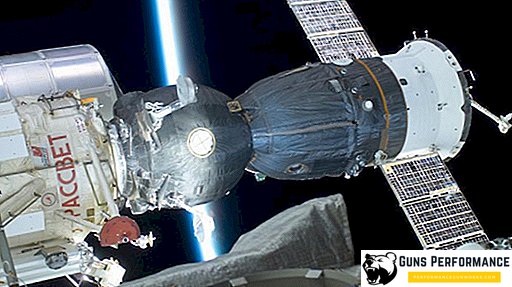From the end of the 18th century, when Russia began to establish itself in the North Caucasus, this region of the country could not be called calm. The nature of the area, as well as the peculiarities of the local mentality, led to disobedience and war against the Russian troops, to banditry. The culmination of the confrontation of the mountaineers who wanted to live according to Sharia, and the Russians, who were trying to push the borders of their empire to the south, was the Caucasian War, which lasted 47 years - from 1817 to 1864. This war was won by the Russian army due to its numerical and technical superiority, as well as due to a number of local internal factors (for example, hostility between clans in the Caucasus Imamate).
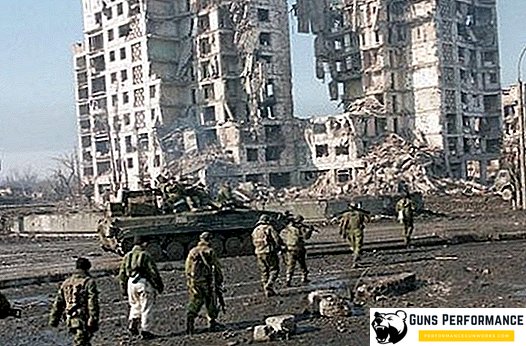
However, even after the end of the Caucasian War, this region did not become calm. Here revolts broke out, but as the Russian borders moved southward, their numbers began to decrease. By the beginning of the 20th century, a relative lull was established in the Caucasus, which was interrupted by the October Revolution and the Civil War that followed. Nevertheless, then the North Caucasus region, which became part of the RSFSR, was quickly “extinguished” without unnecessary losses and collisions. But It is worth noting that insurgent mores reigned here among a part of the population.
During the collapse of the USSR, nationalist and separatist sentiments intensified in the Chechen-Ingush Autonomous Soviet Socialist Republic. Especially their growth intensified after a kind of “doctrine” for the subjects of the USSR “Take as much sovereignty as you can!” And as long as the CIASSR Supreme Council was already open, not so strong, but still could not. Only in October 1991, after the collapse of the Soviet Union became apparent, the Temporary High Council of the Chechen-Ingush Autonomous Soviet Socialist Republic decided to divide the republic directly into the Chechen and Ingush ones.
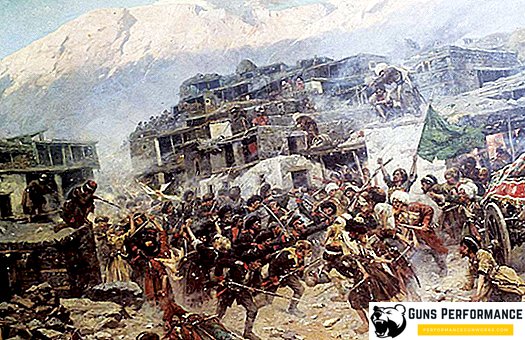
Unrecognized state
On October 17, 1991, a presidential election was held in the Chechen Republic, in which Dzhokhar Dudayev won - Hero of the Soviet Union, an aviation general. Immediately after these elections, the independence of the Chechen Republic of Nokhchi-Cho was unilaterally declared. However, the leadership of the RSFSR refused to recognize both the election results and the independence of the rebellious region.
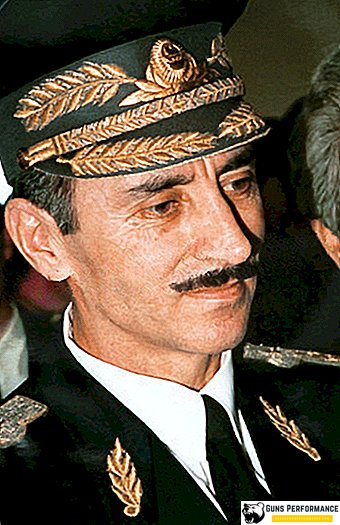
The situation in Chechnya was heating up, and already in the late autumn of 1991 there was a real threat of conflict between the feds and the separatists. The new leadership of the country decided to bring troops into the rebellious republic and stop attempts at secession. However, the Russian troops, transferred by air on 8 November of the same year to Khankala, were blocked by Chechen armed formations. Moreover, the threat of their encirclement and destruction became real, which was completely useless to the new government. As a result, after negotiations between the Kremlin and the leadership of the rebellious republic, it was decided to withdraw the Russian troops, and transfer the remaining equipment to the local armed detachments. Thus, the Chechen army received tanks and armored personnel carriers ...
Over the next three years, the situation in the region continued to deteriorate, and the gap between Moscow and Grozny increased. And though since 1991, Chechnya was essentially an independent republic, but in fact it was not recognized by anyone. However, the unrecognized state had its flag, coat of arms, anthem, and even the constitution adopted in 1992. By the way, it was this constitution that approved the new name of the country - the Chechen Republic of Ichkeria.
The formation of an "independent Ichkeria" was closely connected with the criminalization of its economy and power, which made it clear that Chechnya would actually live at the expense of Russia, while absolutely not wanting to be in its composition. Robbery, robbery, murder and kidnapping flourished on the territory of the republic and in the regions bordering with it. And the more crimes were committed in the region, the clearer it became that it could not go on like this.
However, they understood this not only in Russia, but also in Chechnya itself. The years 1993-1994 were marked by the active formation of opposition to the Dudayev regime, especially noticeable in the northern, Nadterechny region of the country. It was here that in December 1993, the Provisional Council of the Chechen Republic was formed, relying on Russia and setting the goal of overthrowing Dzhokhar Dudayev.
The situation escalated to the limit in the autumn of 1994, when supporters of the new, pro-Russian administration of Chechnya seized the north of the republic and began moving to Grozny. In their ranks there were also Russian servicemen, mainly from the Guards Kantemirovskaya division. November 26, the troops entered the city. Initially, they met no resistance, but the operation itself was planned simply awful: the troops did not even have plans for Grozny and moved to its center, often asking the way from local residents. However, the conflict soon went into a “hot” stage, as a result of which the Chechen opposition was completely defeated, the Nadterechny district again came under the control of supporters of Dudayev, and the Russian soldiers were killed in part, were captured.
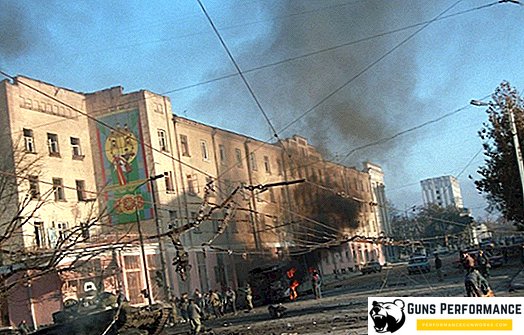
As a result of this short-term conflict, Russian-Chechen relations have sharpened to the limit. In Moscow, it was decided to bring troops into the rebellious republic, disarm illegal armed gangs and establish full control over the region. It was assumed that the majority of the population of Chechnya will support the operation, which was planned exclusively as a short-term one.
Start of the war
On December 1, 1994, Russian aviation bombed airfields that were under the control of Chechen separatists. As a result, a little numerical Chechen aviation, represented mainly by the An-2 transport aircraft and the obsolete Czechoslovak fighters L-29 and L-39, was destroyed.
10 days later, on December 11, President of the Russian Federation B. Yeltsin signed a decree on measures to restore constitutional order in the territory of the Chechen Republic. The start date of the operation was set for Wednesday, December 14th.
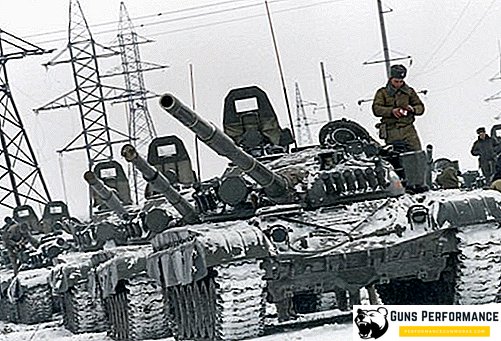
To enter the troops in Chechnya, the United Group of Forces (OGV) was created, which had in its composition both military units of the Ministry of Defense and troops of the Ministry of Internal Affairs. The UGA was divided into three groups:
- The Western group, whose goal was to enter the territory of the Chechen Republic from the west, from the territory of North Ossetia and Ingushetia;
- Northwest grouping - its goal was to enter Chechnya from the Mozdok district of North Ossetia;
- Eastern grouping - entered the territory of Chechnya from Dagestan.
The first (and main) goal of the united group of troops was the city of Grozny - the capital of the rebellious republic. After seizing Grozny, it was planned to clear the southern, mountainous regions of Chechnya and complete the disarmament of separatist detachments.
Already on the first day of the operation, December 11, the forces of the Western and Eastern groups of the Russian troops were blocked near the borders of Chechnya by local residents, who were thus hoping to prevent a conflict. Against the background of these groups, the North-Western group operated most successfully, and by the end of December 12, the troops approached the village of Dolinsky, just ten kilometers from Grozny.
Only by December 12-13, having come under fire and using force, did the Western grouping, as well as the Eastern group, still break through into Chechnya. At this time, the troops of the North-Western (or Moddzk) grouping were fired at Grad multiple rocket launchers in the area of Dolinsky and were drawn into fierce battles for this settlement. It was possible to take possession of Dolinsky only by December 20.
The movement of all three groups of Russian troops to Grozny took place gradually, albeit in the absence of constant fire contact with the separatists. As a result of this advancement, by the end of the December 20s, the Russian army almost came close to the city of Grozny from three sides: the north, the west and the east. However, here the Russian command made a serious mistake - although it was initially assumed that before the decisive assault the city must be completely blocked, but in reality this was not done. In this regard, Chechens could easily send reinforcements to the city from the southern regions of the country controlled by them, as well as evacuate the wounded there.
Storm of the Terrible
It is still unclear what really prompted the Russian leadership to launch the storming of Grozny already on December 31, when there were almost no conditions for that. Some researchers cite the reason for the desire of the military-political elite of the country to take Grozny "straight off" for its own benefit, not considering and even ignoring the rebel gangs as a military force. Other researchers indicate that in this way the commanders in the Caucasus wanted to make a “gift” for the birthday of Russian Defense Minister Pavel Grachev. The words of the latter are widespread, that, “The Terrible can be taken in two hours by one airborne regiment”. However, it must be remembered that in this statement the minister said that the capture of the city is possible only with the full support and support of the army’s actions (artillery support and the complete encirclement of the city). In reality, there were no favorable conditions.
On December 31, Russian troops advanced to assault Grozny. It was here that the commanders made a second glaring mistake - tanks were introduced into the narrow streets of the city without proper reconnaissance and support by infantry. The result of this “offensive” was very predictable and sad: a large number of armored vehicles were burned or captured, some parts (for example, the 131st separate Maikop motorized rifle brigade) were surrounded and suffered significant losses. In this case, a similar situation unfolded in all directions.
The only exception is the actions of the 8th Guards Army Corps under the command of General L. Ya. Rokhlin. When corps troops were drawn into the capital of Chechnya, posts located in close proximity to each other were exposed at key points. Thus, the danger of clipping a group of corps was somewhat reduced. However, soon the corps troops were also surrounded in Grozny.
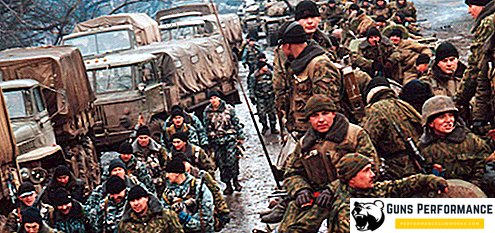
Already on January 1, 1995, it became clear: the attempt of the Russian troops to take the Terrible by storm failed. The troops of the Western and Northwestern factions were forced to retreat from the city, preparing for new battles. It is time for protracted battles for each building, for each quarter. At the same time, the Russian command made quite correct conclusions, and the troops changed their tactics: now actions were conducted by small (not more than a platoon), but very mobile assault-assault groups.
To implement the blockade of Grozny from the south, in early February, the Southern group was formed, which soon managed to cut the Rostov-Baku highway and cut off supplies and reinforcements to the militants in Grozny from the southern highlands of Chechnya. In the capital itself, Chechen gangs gradually retreated under the blows of the Russian troops, sustaining noticeable losses. Finally, Grozny came under the control of the Russian troops on March 6, 1995, when the remnants of the separatist troops retreated from its last area, the Chernorechye.
Fighting in 1995
After the capture of Grozny, the United Group of Forces was faced with the task of occupying the lowland areas of Chechnya and depriving the militants of the bases located here. At the same time, Russian troops sought to have good relations with civilians, persuading them not to assist the militants. Such tactics very quickly brought their results: by March 23 the city of Argun was taken, and by the end of the month - Shali and Gudermes. The fiercest and bloodiest were the battles for the settlement of Bamut, which was never taken until the end of the year. However, the results of the March battles were very successful: almost the entire flat territory of Chechnya was cleared of the enemy, and the morale of the troops was high.
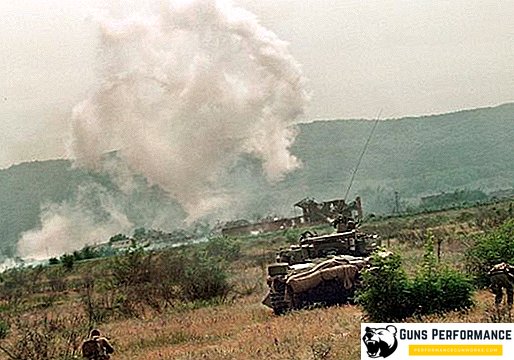
After taking control of the flat areas of Chechnya, the command of the UGV announced a temporary moratorium on the conduct of hostilities. This was due to the need to regroup the troops, bring them in order, as well as the possible start of peace negotiations. However, to reach any agreement did not work out, therefore, since May 11, 1995, new battles began. Now the Russian troops rushed to the Argun and Vedensky gorges. However, here they were faced with the stubborn defense of the enemy, which is why they were forced to start maneuvering. Initially, the direction of the main attack was Shatoi; soon the direction was changed to Vedeno. As a result, the Russian troops managed to defeat the separatist forces and take control of the bulk of the territory of the Chechen Republic.
Nevertheless, it became clear that with the transition of the main settlements of Chechnya under Russian control, the war will not end. This was especially clearly marked on June 14, 1995, when a group of Chechen militants under the command of Shamil Basayev, with a daring raid, managed to seize a city hospital in the town of Budennovsk, Stavropol Territory (which is located about 150 kilometers from Chechnya), taking hostage about one and a half thousand people. It is noteworthy that this terrorist act was carried out precisely when the President of the Russian Federation B. N. Yeltsin declared that the war in Chechnya was almost over. Initially, the terrorists put forward conditions such as the withdrawal of Russian troops from Chechnya, but then, over time, they demanded money and a bus to Chechnya.
The effect of the seizure of the hospital in Budennovsk was similar to a bomb exploded: the public was shocked by such a daring and, most importantly, successful attack. It was a serious blow to the prestige of Russia and the Russian army. In the following days, the storming of the hospital complex was carried out, leading to heavy losses both among the hostages and among the security forces. Ultimately, the Russian leadership decided to fulfill the demands of the terrorists and allowed them to go by bus to Chechnya.
After the hostage-taking in Budennovsk, negotiations began between the Russian leadership and the Chechen separatists, who on June 22 managed to achieve a moratorium on hostilities for an indefinite period. However, this moratorium was systematically violated by both parties.
Thus, it was assumed that local self-defense units would take control over the situation in Chechen settlements. However, under the guise of such detachments, fighters with weapons often returned to auls. As a result of such violations, local battles were fought throughout the republic.
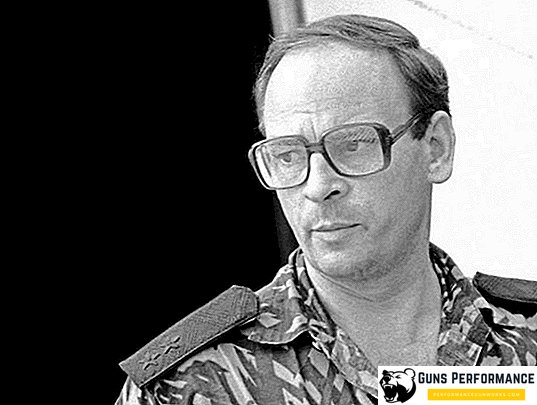
The peace process continued, but it was ended on October 6, 1995. On this day, an attempt was made on the attack on the commander of the Joint Group of Forces Lieutenant General Anatoly Romanov. Immediately after this, “punishment strikes” were inflicted on some Chechen settlements, and there was also some intensification of hostilities in the territory of the republic.
A new round of escalation of the Chechen conflict occurred in December 1995. On the 10th, Chechen detachments under the command of Salman Raduyev suddenly occupied the city of Gudermes, which was being held by Russian troops. Nevertheless, the Russian command promptly assessed the situation, and already during the fighting on December 17-20, it again returned the city to its hands.
In mid-December 1995, presidential elections were held in Chechnya, in which the main pro-Russian candidate, Doku Zavgayev, won with a huge advantage (receiving about 90 percent). Separatists did not recognize the election results.
Fighting in 1996
On January 9, 1996, a group of Chechen militants raided the city of Kizlyar and a helicopter base. They managed to destroy two Mi-8 helicopters, and also to seize the hospital and 3,000 civilians as hostages. The requirements were similar to those in Budennovsk: the provision of transport and a corridor for the unhindered departure of terrorists to Chechnya. The Russian leadership, taught by the bitter experience of Budennovsk, decided to fulfill the conditions of the militants. However, on the way, it was decided to prevent the terrorists, as a result of which they changed the plan and raided the village of Pervomayskoye, which they seized. This time it was decided to take the village by storm and destroy the separatist forces, but the assault ended in complete failure and losses among the Russian troops. The stalemate around Pervomaisky was observed for several more days, but on the night of January 18, 1996, the militants broke through the encirclement and left for Chechnya.
The next high-profile episode of the war was the March raid of militants on Grozny, which was a complete surprise to the Russian command. As a result, Chechen separatists managed to temporarily capture the Staropromyslovsky district of the city, as well as capture considerable supplies of food, medicines and weapons. After that, the fighting on the territory of Chechnya flared up with a new force.
16 апреля 1996 года у селения Ярышмарды российская военная колонна попала в засаду боевиков. В результате боя российская сторона понесла огромные потери, а колонна утратила почти всю бронетехнику.
В результате боёв начала 1996 года стало ясно, что российская армия, сумевшая нанести существенные поражения чеченцам в открытых боях, оказалась фатально неготовой к партизанской войне, подобной той, что имела место ещё каких-то 8-10 лет назад в Афганистане. Увы, но опыт Афганской войны, бесценный и добытый кровью, оказался быстро забыт.
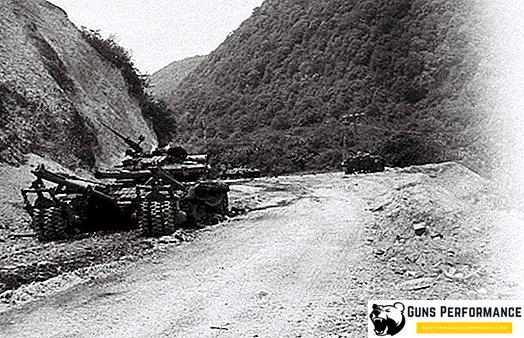
21 апреля в районе села Гехи-Чу ракетой воздух-земля, выпущенной штурмовиком Су-25, был убит президент Чечни Джохар Дудаев. В результате ожидалось, что обезглавленная чеченская сторона станет более сговорчивой, и война вскоре будет прекращена. Реальность, как обычно, оказалась сложнее.
К началу мая в Чечне назрела ситуация, когда можно было начинать переговоры о мирном урегулировании. Этому было несколько причин. Первой и основной причиной была всеобщая усталость от войны. Российская армия, хоть и имела достаточно высокий боевой дух и достаточно опыта для ведения боевых действий, всё равно не могла обеспечить полный контроль над всей территорией Чеченской республики. Боевики также несли потери, а после ликвидации Дудаева были настроены начать мирные переговоры. Местное население пострадало от войны больше всех и естественно, не желало продолжения кровопролития на своей земле. Другой немаловажной причиной были грядущие президентские выборы в России, для победы в которых Б. Ельцину было просто необходимо остановить конфликт.
В результате мирных переговоров между российской и чеченской стороной было достигнуто соглашение о прекращении огня с 1 июня 1996 года. Спустя 10 дней была также достигнута договорённость о выводе из Чечни российских частей кроме двух бригад, задачей которых было сохранение порядка в регионе. Однако после победы на выборах в июле 1996 года Ельцина боевые действия возобновились.
Ситуация в Чечне продолжала ухудшаться. 6 августа боевики начали операцию «Джихад«, целью которой было показать не только России, но и всему миру, что война в регионе далека от завершения. Эта операция началась с массированной атаки сепаратистов на город Грозный, снова оказавшейся полнейшей неожиданностью для российского командования. В течение нескольких дней под контроль боевиков отошла большая часть города, а российские войска, имея серьёзное численное преимущество, так и не сумели удержать ряд пунктов в Грозном. Часть российского гарнизона была блокирована, часть выбита из города.
Одновременно с событиями в Грозном боевикам удалось практически без боя овладеть городом Гудермес. В Аргуне чеченские сепаратисты вошли в город, заняли его почти полностью, но наткнулись на упорное и отчаянное сопротивление российских военнослужащих в районе комендатуры. Тем не менее, ситуация складывалась поистине угрожающей - Чечня запросто могла «полыхнуть».
Итоги Первой чеченской войны
31 августа 1996 года между представителями российской и чеченской стороны был подписан договор о прекращении огня, выводе российских войск из Чечни и фактическом окончании войны. Однако окончательное решение о правовом статусе Чечни было отложено до 31 декабря 2001 года.
Мнения разных историков относительно правильности такого шага, как подписание мирного договора в августе 1996 года, порой диаметрально противоположны. Бытует мнение, что война была окончена именно в тот момент, когда боевики могли быть полностью разгромлены. Ситуация в Грозном, где войска сепаратистов были окружены и методично уничтожались российской армией, косвенно это доказывает. Однако с другой стороны, российская армия морально устала от войны, что как раз и подтверждает быстрый захват боевиками таких крупных городов, как Гудермес и Аргун. В итоге мирный договор, подписанный в Хасавюрте 31 августа (более известный как Хасавюртовские соглашения), явился меньшим из зол для России, ведь армия нуждалась в передышке и реорганизации, положение дел в республике было близким к критическому и угрожало крупными потерями для армии. Впрочем, это субъективное мнение автора.
Итогом Первой чеченской войны можно назвать классическую ничью, когда ни одну из воюющих сторон нельзя твёрдо назвать выигравшей или проигравшей. Россия продолжала выдвигать свои права на Чеченскую республику, а Чечня в результате сумела отстоять свою «независимость», хоть и с многочисленными нюансами. В целом же ситуация кардинально не изменилась, за исключением того, что в следующие несколько лет регион подвергся ещё более существенной криминализации.
В результате этой войны российские войска потеряли примерно 4100 человек убитыми, 1200 - пропавшими без вести, около 20 тысяч - ранеными. Точное число убитых боевиков, равно как и количество погибших мирных жителей, установить не представляется возможным. Известно лишь, что командование российских войск называет цифру в 17400 убитых сепаратистов; начальник штаба боевиков А. Масхадов озвучил потери в 2700 человек.
После Первой чеченской войны в мятежной республике были проведены президентские выборы, на которых весьма закономерно одержал победу Аслан Масхадов. Однако мира на чеченскую землю выборы и окончание войны так и не принесли.


